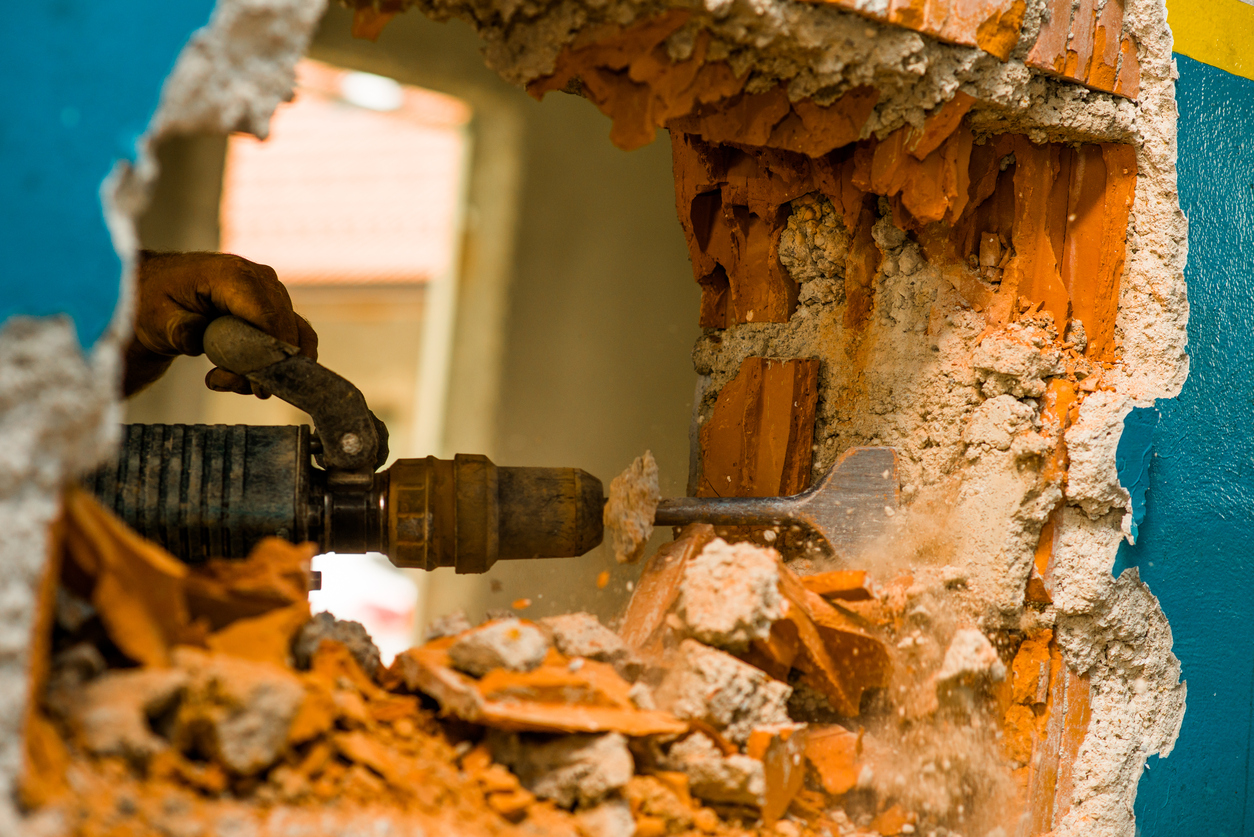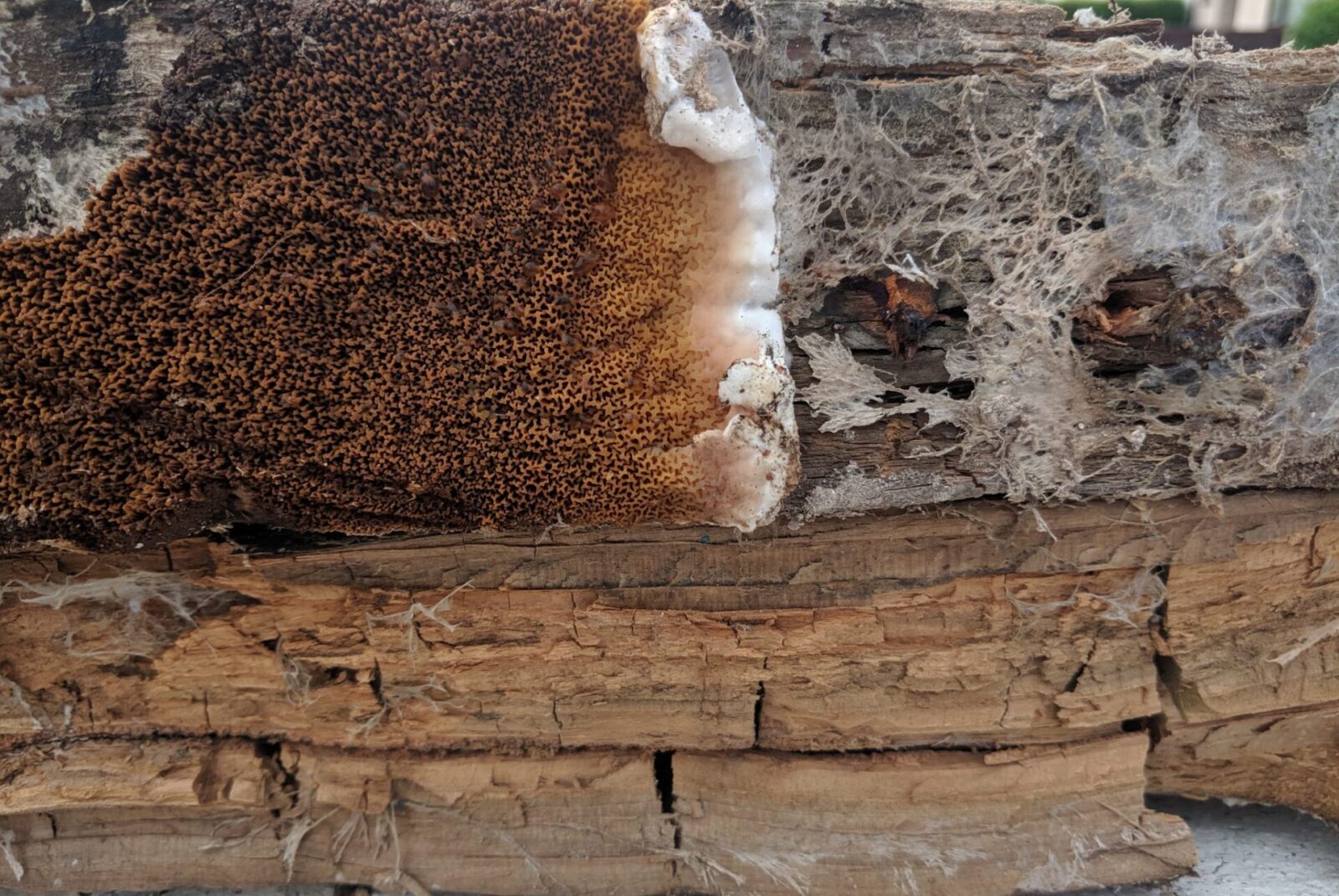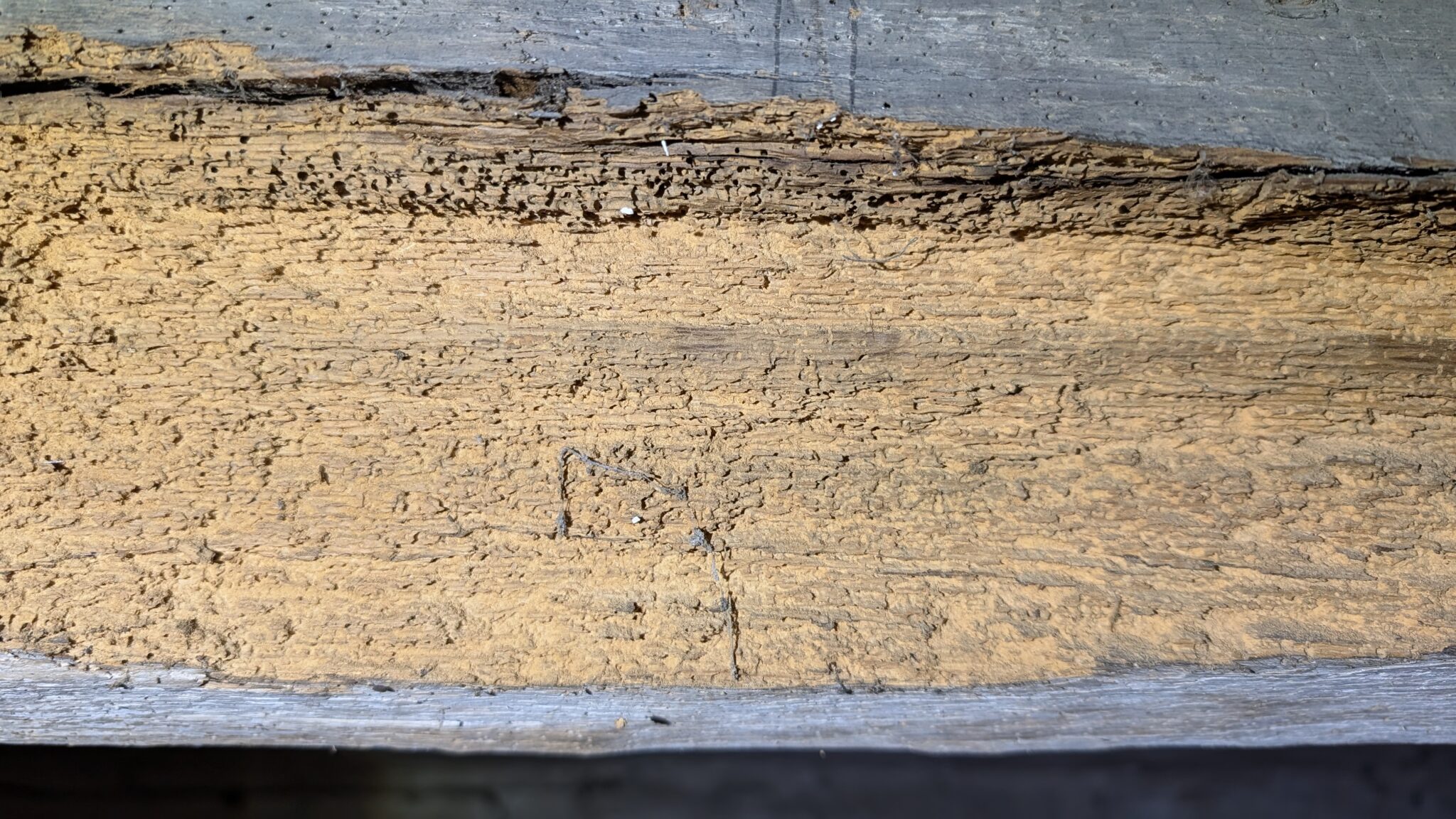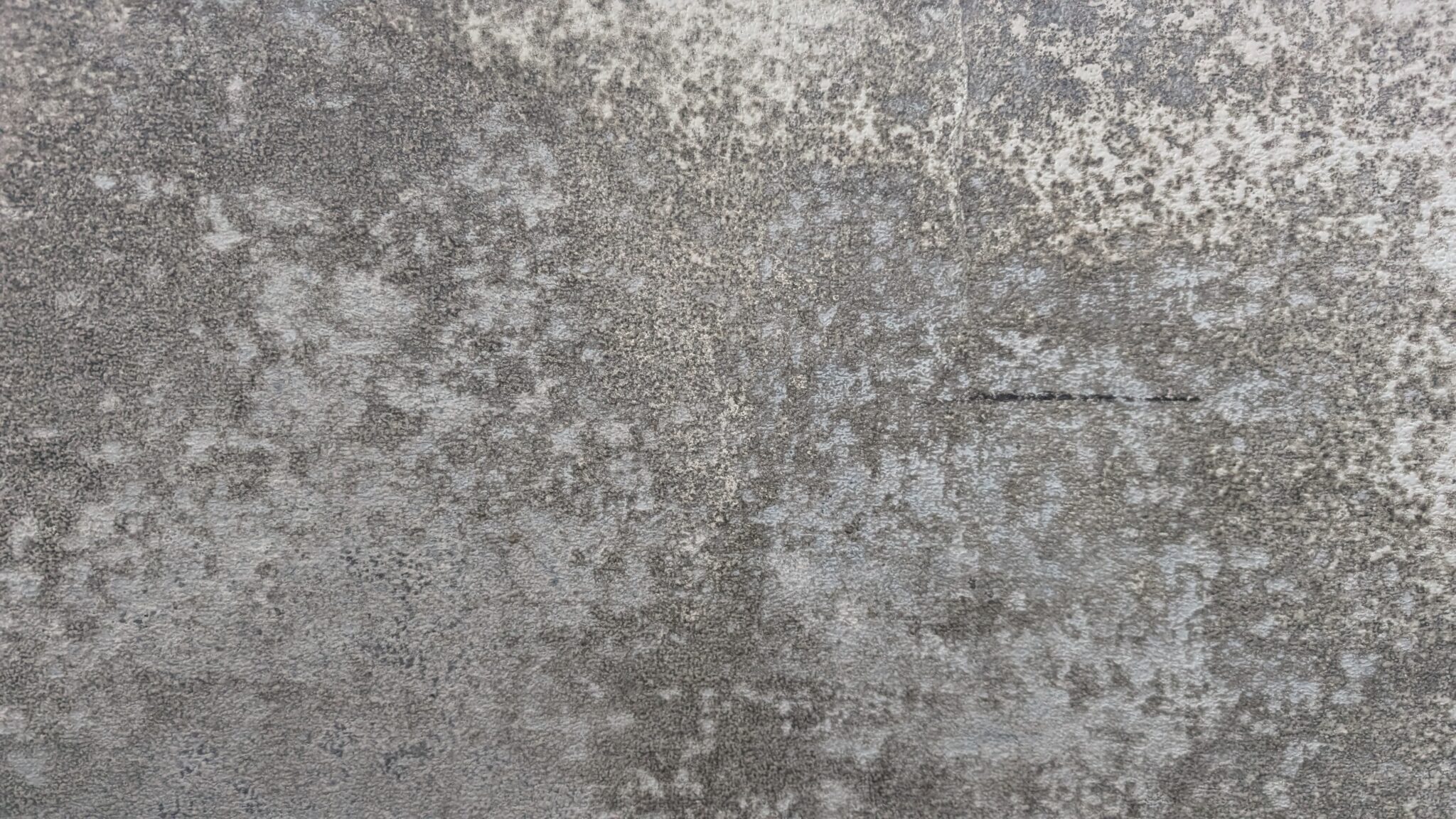Damp and Timber Survey Report Manchester
Damp Proofing - Woodworm - Dry Rot - Wet Rot - Condensation
Damp proofing Manchester, damp and timber report Manchester, damp and timber survey Manchester, dry rot specialist Manchester, woodworm specialists Manchester, rising damp Manchester, condensation Manchester.
Dampserve is an independent damp and timber survey report company in Manchester. We provide specialist timber and damp reports for homeowners, buyers and for mortgage purposes. Our company specialise in all types of property for residential and commercial clients. We correctly diagnose rising dampness, condensation, woodworm, dry rot and all other timber and damp problems.
Damp and timber report, damp survey cost, damp and timber report cost, timber and damp report cost, damp and timber survey cost, damp and timber survey Manchester. PCA registered damp and timber report cost, timber and damp report and caravan damp report. Who should pay for a damp and timber report? Damp and timber report for mortgage, pre purchase damp and timber report, damp and timber report near me, damp proof specialists near me, how much does a damp survey cost, damp report cost, how much does a damp and timber report cost.
Independent damp specialist near me, high damp readings on homebuyer report should I still buy, pca damp survey cost, free damp survey Manchester, damp survey Manchester, damp and timber survey, fungal decay specialist, damp, cost of damp survey, damp specialist Manchester, free damp survey, damp proof survey cost. PCA damp and timber report, condensation experts, free damp survey near me, timber and damp survey, damp and timber survey cost UK, condensation specialist, timber report, condensation specialists, damp surveyor cost, damp inspection cost, damp and timber specialist, rentokil damp survey cost, condensation damp treatment, rising damp companies, powderpost beetle uk, surveyor caravan, how much is a damp survey, rising damp survey cost.
Damp and timber report for mortgage purposes, buying, selling and for commercial buildings.
We are the leading specialist damp proof treatment contractors in Manchester. Our highly skilled damp surveyors conduct comprehensive damp and timber surveys for homeowners, buyers, and landlords. We effectively tackle all issues related to damp proofing, woodworm treatment, dry rot treatment, and rising damp surveys. Additionally, we are experts in specialist condensation control surveys and treatments.
If you need a specialist damp company in Manchester, look no further. We provide authoritative advice on dampness, woodworm, dry rot, and condensation issues. With over 50 years of experience in delivering specialist damp and timber surveys, we produce detailed reports that you can trust. Our top surveyors bring a combined total of over 150 years of field experience, guaranteeing you receive the best advice possible.
Our primary objective is to give you expert insight and accurately diagnose any form of damp proofing, dry rot, or woodworm problems throughout Manchester and across the UK. Count on us to deliver results that protect your property.
Damp and timber report Manchester

We are a leading damp and timber report company in Manchester, delivering essential damp and timber reports for mortgage applications and property sales. Our experts carry out full damp and timber surveys for residential homes, commercial buildings, and tenanted properties. Each report is conducted by a fully qualified damp specialist and is accepted by all lenders.
If you’re in the process of buying or selling a house, it’s crucial to act promptly. Should the bank require you to instruct a damp and timber treatment contractor for a survey and report, we are your best choice. We specialise in delivering precise and reliable timber and damp surveys tailored for this situation.
Damp and timber survey Manchester
We are a leading damp and timber survey company in Manchester. If you need a damp report or timber report, the first action is to conduct a thorough timber or damp survey. Our full-scale damp and timber surveys are carried out in Manchester adhering to PCA standards. Our team of fully qualified surveyors is equipped to accurately diagnose any damp issues you may have. Additionally, our specialists are experts in identifying condensation, woodworm and dry rot problems. Trust us to handle your damp and timber concerns effectively.
Free damp and timber survey Manchester
Free Damp and Timber Report in Manchester
It’s important to understand that many companies offering free damp and timber surveys in Manchester often have hidden agendas. These businesses typically aim to sell you a new chemical damp proof course. The most trustworthy damp proofing companies in Manchester charge for their surveys, as this ensures a thorough and accurate assessment. Expect to pay between £190 and £490 for a complete damp proof survey, depending on the size of your property and the extent of the checks required. Don’t settle for free surveys that may lead to unnecessary expenses; invest in a reliable service.
Check out our damp proof course myth page and see for yourself that you don’t need a new damp proof course and you don’t have rising damp. The damp and timber treatment contractor is trying to sell you something that you don’t need.
SURVEY & REPORT STARTING FROM - £190
How Much Does a Damp Report Cost? | How Much Does a Damp Survey Cost?
How Much Does a Damp Survey and Report Cost in 2024?
The cost for a damp and timber report is £190 to £490 and includes the essential survey needed to generate the report. If your home is facing issues like damp walls, condensation, timber rot, penetrating damp, dry rot, or woodworm, it’s time to take action. Whether you need damp-proofing, dry rot treatments, woodworm solutions, or a reliable damp and timber report for selling your property, we are here to resolve all these problems effectively. Don’t wait—get in touch with us today.
Key Takeaways:
- Dampness is often seen as a major concern in UK homes and buildings. While you may find claims online about its links to asthma and other health issues, many of these assertions are exaggerated. The real concern with dampness is its potential to cause significant structural damage, including the risk of floors collapsing and walls falling. However, if you notice damp walls, there’s a good chance that about 90% of the problem is condensation. Fortunately, condensation is typically a simple issue to resolve and usually does not lead to serious problems.
Structural dampness is a serious issue caused by unwanted moisture within a building structure, stemming from penetrating dampness or internal condensation. Many of these dampness problems arise from climate-related factors such as condensation and rain penetration.
A specific type of dampness known as “elevated humidity” occurs when liquid rises from the bottom to the top through concrete or masonry. The shape and porosity of the building materials directly influences this process. Thermal bridging is another significant contributor to dampness, intensifying mold growth in corners of walls and at floor-wall junctions. A thermal bridge marks a critical point in a building’s envelope where thermal resistance changes.
It’s crucial to recognize that structural dampness, regardless of its origin, becomes more severe with elevated moisture levels. Effective moisture control is non-negotiable for the proper functioning of any building. Managing humidity is vital to protect the health of occupants and to defend the building itself, along with its mechanical systems and contents, from physical and chemical damage.
The term “damp” often triggers concern among homeowners, and rightly so. While it’s a common issue in the UK, addressing it head-on is crucial. Damp can be destructive and poses serious health risks if left untreated for an extended period. If you notice any signs of dampness in your home or in a property you’re considering purchasing, obtaining a professional damp survey is a must. Dampness problems can vary widely, from minor issues like water stains or mould patches to significant concerns such as structural decay and crumbling plaster.
Let’s dive into the details of damp survey costs and understand what to expect… (How Much Does a Damp Survey Cost?)
What is a Damp Survey?
A qualified damp specialist conducts a damp survey to identify any damp areas in your property. This survey includes a thorough inspection and the use of specialized equipment to assess the severity of any issues.
Different types of dampness may be identified during the survey, each requiring a specific treatment approach. The damp survey will determine if dampness is present, the type of damp you have, and the appropriate treatment measures.
It’s essential to ensure that the surveyor is a certified Timber & Damp surveyor or a CSTDB-qualified professional. This certification gives you confidence that the surveyor will properly inspect the property for signs of dampness, evaluate the extent of any damage, and estimate the cost of necessary remediation work.
While a general property survey examines the overall condition of the structure, a damp survey specifically focuses on the types of damp present and the damage they have caused.
What Does a Damp Survey Involve?
A damp survey aims to assess moisture patterns within the walls and other building elements. The survey helps identify how moisture moves through damp areas in walls, floors, and other spaces, allowing for the determination of which areas require treatment and which need protection against potential future damp issues.
The report created from the damp survey will provide the client with a detailed understanding of the dampness issues, including their severity and best treatment options.
During the inspection, the damp surveyor will use a damp meter and look for visual indicators. They will check for wet plaster, wood rot, signs of rising damp, condensation around windows, and other areas prone to damp problems.
Finally, the surveyor will prepare a report that includes treatment recommendations.
How Long Does a Damp Survey Take?
A damp survey typically takes between 2 to 3 hours to complete. The duration of the survey can vary based on several factors: the type of damp present, the size of your home, and the severity of the issues found, such as broken roof tiles, faulty guttering, wet skirting boards, or other signs of water damage.
Importantly, the survey will assess the entire property to investigate potential hidden signs of dampness, not just the known areas of concern.
How Much Does a Damp Survey Cost?
The cost of a damp survey is largely determined by the size of your home. A larger property with more rooms will take longer to survey, resulting in higher costs. For example, a damp survey for a two-bedroom property typically starts at around £190. However, the cost may increase for a four-bedroom house to between £290 and £390. In the case of a larger four-bedroom detached house, the fee could range from £490 to £590, depending on various conditions.
Location also plays a significant role in the cost of damp surveys. Certain areas of the UK, particularly London and the South East, tend to be more expensive.
Moreover, some mortgage lenders may require a damp and timber survey, which usually costs between £190 and £290.
While it might seem that damp surveyors earn a lot for just one or two hours of work, this is not the case. They typically spend several hours preparing a detailed report after completing the survey.
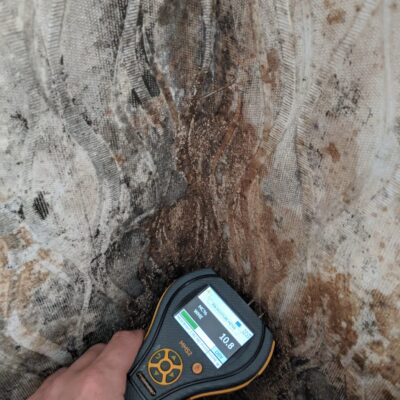
How much does a timber and damp report cost?
A damp and timber report is essential and typically costs between £190 and £490. Be aware that this price may increase for commercial properties or larger buildings. The cost reflects the expertise of a specialist damp surveyor who will accurately diagnose your damp issue. After the assessment, you will receive a comprehensive report that is crucial for mortgage applications and resolving disputes.
What does a damp and timber report involve?
A damp and timber report is essential for any property. Our specialist surveyor thoroughly inspects your building for signs of dampness, timber decay, and woodworm infestation. They will identify critical issues such as rising damp, penetrating dampness, dry rot, wet rot, woodworm, and condensation.
The report you receive will provide clear details about any damp problems, woodworm infestations, dry rot issues, and any other relevant matters identified during the survey. You can trust that we will ensure your property is assessed comprehensively.
How long does it take to get a damp and timber report?
Should I be worried about damp on survey?
There’s no need to worry about damp issues highlighted in your survey. Most of the time, when damp is detected in a homebuyer’s report or building survey, it’s incorrectly diagnosed. In Manchester, condensation is the primary cause of damp in homes, and it is a straightforward problem to resolve. To accurately assess whether you have damp walls or just a condensation issue, you must have a specialist damp survey performed.
How much is a damp survey in Manchester?
The leading damp proofing companies in Manchester charge for a damp proof survey, with prices ranging from £190 to £490, based on the property’s size and the checks needed. Be wary of companies offering free damp surveys; they are likely to push for selling you a new damp proof course. It’s important to invest in a thorough evaluation to ensure your property’s protection against damp.
How to get a damp and timber report?
Booking a damp and timber report is simple, but finding a reputable company and surveyor is crucial. Avoid anyone offering free damp and timber surveys in Manchester. You must ensure they won’t push unnecessary chemical treatments, such as a damp proof course. Steer clear of contractors who recommend treatments solely for profit.
We are the trusted damp specialists in Manchester. Unlike many damp contractors, we do not seek out business or promote chemical treatments. We charge for all our damp and timber surveys, which means we are committed to providing honest assessments without the pressure to recommend unnecessary treatments. Choose wisely and protect your investment.
Is it worth paying for a damp survey?
Investing in a damp survey is crucial. Homes are costly, and damp proofing can be even more expensive. You must uncover any damp issues before making a purchase. We strongly recommend paying for a comprehensive damp and timber survey, as companies that advertise free damp surveys will often push for damp proofing, regardless of whether it’s necessary. This is how they generate their income. Don’t take that risk—get a reliable survey conducted.
Damp and Timber Report Manchester
What is a Damp and Timber Report and How Much Does it Cost in Manchester?
A damp and timber report is a document you receive after a timber and damp survey. If you hire a contractor for this survey, you may only get a quotation. However, if your lender or surveyor asks for a specialised survey, you will need a damp and timber report from a damp-proof specialist in Manchester. This report includes the surveyor’s findings, recommendations, and how to fix any dampness problems or issues with timber decay or infestation.
During the survey, the surveyor checks for rising dampness, penetrating dampness, woodworm, dry rot, and condensation. If they find any problems or timber decay/rot, they will look into it further.
Why Do I Need a Damp and Timber Report?
Your mortgage lender often requires a timber and damp report when you want to buy a property. They want to make sure the building is structurally sound and free from damp issues, dry rot, and woodworm infestation. Most surveyors will suggest a damp and timber report if they find any signs of dampness. They will also recommend it if they see timber decay or wood-boring insects. The lender might also ask for the surveyor to be a member of the Property Care Association (PCA). While this is not mandatory, it is helpful to choose a surveyor with the right qualifications and experience.
Do I Need to Get a Damp and Timber Report Before Buying a House?
Finding dampness problems requires a specialist surveyor. A builder or general contractor may not have the right tools to test for dampness issues accurately. Our surveyors have the required experience and tools to properly diagnose these problems. Just as you would see a doctor for health issues instead of asking a shopkeeper, you should not buy a house without understanding its condition. A specialist survey can help you avoid spending a lot of money on damp-proofing or timber treatment later on.
Will We Check the Damp-Proof Course During the Survey?
Locating the damp-proof course (DPC) is one of the first tasks our surveyor will do during the survey. Most UK homes have a working DPC to prevent rising dampness in the walls. After locating the DPC, the surveyor will look for high-ground levels and any obstructions. If the DPC is blocked, it could lead to expensive problems and timber rot. These issues can often be fixed by lowering the external ground levels.
What is Included in a Damp and Timber Report?
Our surveyor will look for timber and damp-related problems and recommend treatments for damp-proofing, woodworm, and timber rot. They will inspect all accessible walls for rising dampness, condensation, and salt dampness. If needed, carpets may be moved to check subfloor timber for woodworm, dry rot, and decay. It is important to assess the condition of the subfloor timber when possible.
The surveyor will also check the building’s exterior for signs of broken rainwater goods, high ground levels, and ventilation for the subfloor. They will inspect the entire property for signs of water ingress, which can cause dampness and timber decay. The roof void will be examined for woodworm infestations, dampness, and timber rot.
After the damp and timber survey, the specialist surveyor will create a complete damp and timber report. This report will include all findings, recommendations, a site plan, and a quotation if needed.
Damp and Timber Survey Manchester
Manchester damp and timber experts. We offer specialist damp and timber surveys in Manchester for pre purchase and homeowners. We carry out woodworm, dry rot, condensation and rising damp surveys on many different types and ages of buildings. Our damp surveyors will inspect the entire property for signs of dampness, woodworm infestation, timber rot and condensation. All surveys will recommend a range of treatments to fix your damp, dry rot, woodworm problem or control your condensation.
Has a valuation survey picked up dampness to the ground floor walls, or has it identified woodworm or dry rot? Dampserve can help by carrying out a full specialist damp and timber survey on the property. We will correctly diagnose timber and dampness problems that the property may have.
Buying a property is going to be the most expensive purchase you make in your lifetime. It’s vital to protect yourself from expensive damp proofing and timber decay treatment. This is why one of the most important things you need before purchasing a home, is to have the property inspected by a damp proof specialist.
Specialist pre-purchase damp and timber survey Manchester for damp problems, dry rot, condensation & woodworm
What’s included with our damp and timber survey in Manchester:
- A professional expert inspection of the entire property.
- Inspection for dampness problems, woodworm infestation and wet/dry rot.
- Our surveyor will look at external defects that are causing dampness issues or that could damp problems or timber decay in the future.
- We will move small items and lift carpets where we feel it is necessary to inspect for woodworm or timber decay (with vendors written permission).
- Our damp surveyor will locate the original damp proof course
- We will inspect all accessible internal walls for signs of a damp problem.
- Our timber surveyor will also, inspect the roof void for woodworm and timber decay.
- Once the damp and timber survey has been carried out, we will provide a full damp and timber report.
- The report will have all findings, recommendations and a quotation if necessary.
During the timber and damp survey, our surveyor will look for signs of woodworm, dry rot, penetrating dampness, rising damp and condensation. If any issue is found in the property, our surveyor will then find the root cause and not just say it’s rising damp like most damp and timber treatment contractors in Manchester.
Landlord survey – condensation
We offer a landlord survey for problem tenants. Is your tenant complaining about dampness, mould and water running down the walls? Our condensation specialist can carry out a condensation survey to determine if the problem is caused by the tenant or if there is a dampness problem in the house.
If any chemical work is carried out by our company, you will receive a long-term guarantee. This guarantee can be passed on to any new owner if the property is sold.
DAMP PROOFING AND RISING DAMP TREATMENT

Damp proofing Manchester
What is damp proofing and why do I need to damp proof my house?
Our specialist damp proofing advice below will help you understand dampness problems and show you how to fix damp walls in Manchester. The main cause of dampness in walls and in your home is condensation. You may also suffer from rising damp, penetrating damp or low-level bridging.
Do you have a dampness problem in your home in Manchester and require damp proof treatment? Our damp proof specialists have been fixing damp for many years. We specialise in correctly diagnosing dampness problems. Our fully qualified damp surveyors will correctly diagnose your damp problem. Our surveyor will then provide the correct damp proofing treatment to fix your damp problem.
Contact us today via our contact form to book a damp survey. Also, keep reading below to find out more about your damp problem and our damp proofing services. You might find out how to fix your dampness problem below.
Signs of a damp problem
Common signs of damp are peeling wallpaper, tide marks, bubbling plaster, black mould, or any discolouration of areas of walls. If you see any of these signs in your home, then it is likely that you will need some kind of damp proofing treatment.
- Damp proofing walls
- Rising damp treatment
- Tanking
- Penetrating damp treatment
- Ventilation improvement
There are a number of issues that cause dampness problems in your home. It could be caused by faulty plumbing, defective rainwater goods, high external ground levels, poor ventilation and more.
Our professional damp proofing surveyors will be able to correctly diagnose your damp problem and recommend the correct treatment necessary.
Damp proofing walls in your property
Most people will have a damp proof treatment carried out once they see damp staining on their internal walls. What people don’t know is that damp can cause more serious problems than just staining, bubbling plaster, mould growth and peeling wallpaper. Damp can cause skirting boards, floor boards, and timber joists to become rotten. Damp can cause wet rot and dry rot. This can cause serious structural issues within your home.
Damp walls can also make your home less energy-efficient. Walls that are damp and have moisture inside them take longer to warm up. Damp walls will result in higher energy bills. So if you notice that you have damp walls, we would highly recommend you have a damp survey carried out. The sooner you damp proof walls the better, as the longer it’s left the more it will deteriorate and cost you.
Walls that need damp proofing get damp from many issues such as:
Condensation (poor ventilation)
Cavity wall issues
Defective roofing, downpipes, sold pipes and guttering
Bridging of the damp proof course
Foundation or floor slab issues
Dampness, damp treatment and damp proofing
Figuring out what type of damp proofing you require is very difficult for those who are not a damp specialist or trained in diagnosing damp problems. It is very hard to correctly diagnose a dampness problem. Rising damp, penetrating damp, condensation and bridging of the damp proof course all look very similar. All these different dampness problems require completely different damp proof treatments.
When most people talk about damp proofing or damp treatments, they immediately think it will involve a new damp proof course. The installation of a new chemical damp proof course is a type of damp proofing where a vertical barrier is placed into a wall to prevent rising damp. There are many different types of damp-proof treatments. You will need a specialist damp survey carried out to determine what damp proof treatment you need.
Most homeowners would have heard about a damp proof course, membrane system, tanking and PIV units. But most homeowners want to know which issue would require which treatment. This is why it is so important to get the correct diagnosis of your problem.
What is a damp proof course? & Do I need a new damp-proof course?
A damp proof course is a barrier to prevent moisture from rising into your walls. It is very unlikely that you will need to install a new damp proof course. Most houses in the UK already have a physical damp proof course. Your physical damp proof course does not break down or deteriorate. We have discovered damp proof courses that are well over 100 years old and still look brand-new today. Visit our damp proof course myth page before you think about installing a new chemical damp proof course. A lot of damp proofing contractors in the UK will recommend a new damp proof course when it is not needed. This is why we can’t stress enough the need to have your damp problem correctly diagnosed by a damp specialist in the UK
Your damp proof course will only stop rising damp. If your issue is down to condensation or bridging, a new chemical damp proof course will not be required. Condensation is an easy fix, simply improve ventilation in your high-humidity areas such as your kitchen, bathroom and utility room. Bridging of the damp proof course is a little bit more complicated. You first need to figure out where your damp proof course is being bridged and how it has been bridged. The most common cause of a damp proof course being bridges is by a high flowerbed or high driveway.
What is a damp proof membrane?
A damp proof membrane is a heavy-duty sheet of plastic that is fixed to the walls before re-plastering. The best way we can describe the damp proof membrane is like heavy-duty bubble wrap. A damp proof membrane is a great material to be used in association with rising damp, penetrating damp and on walls that are below ground level.
Even when using a damp proof membrane, you will still need to find the source of moisture and isolator. The bubble-like surface creates a small void behind the membrane that allows the walls to dry out naturally. These damp proofing membranes are used in structural waterproofing jobs in basements.
How to fix condensation? & how to stop condensation?
Is your house suffering from access water on windows or black mould in the corners of rooms? This is a sign that your house is suffering from condensation. The problem will normally get worse during the cold winter months. This is a sign of poor ventilation and inadequate heating. The mould problem is usually a lot worse in your bathroom and around the kitchen area. That’s because these are high-humidity areas. You create steam when showering, cooking, drying clothes and boiling the kettle. If you don’t have ventilation in these areas where will the steam go? The steam will condense on cold surfaces and turn into water droplets. These water droplets eventually turn into stale water and then into black mould.
This is why we say that fixing condensation is a simple fix. How can I stop condensation from happening in my house? The simple fix is to install adequate fans in the high-humidity areas such as the kitchen and bathroom.
How to treat dampness in a basement/cellar?
Having dampness in your basement is very common. You get damp in a basement because it is below ground level. The only way to treat dampness in the basement is to tank the walls. This is called waterproofing a basement instead of damp proofing a basement. We would highly recommend you contact a basement tanking specialist in the UK to treat any dampness in the basement.
Do I need to use a professional damp proofing company?
When it comes to damp proofing,g we would always recommend getting a damp specialist in the UK to correctly diagnose your issues first. We see many homeowners in the UK who try to tackle a dampness problem themselves. Most homeowners will install a new chemical damp proof course (dry rod system). After they install the new damp proof course and re-plaster, the damp comes straight back. This is because the damp issue wasn’t rising damp. The damp may have been down to bridging or condensation.
You will need to use a professional damp proofing company to carry out any damp treatments on your home if you wish to sell. New buyers and their banks will need to see a guarantee on any chemical damp proof treatment carried out on your property.
If a damp problem in your home is left or treated incorrectly, this can lead to worse damp issues. If the source of moisture is not found and isolated, this can cause worse structural problems. This is why we would always recommend using an experienced, qualified damp proofing contractor in the UK.
We are one of the leading damp proof contracting companies in UK. With many years of experience in correctly diagnosing and treating damp UK, you can be assured that you are in safe hands when instructing our company to carry out any damp proofing or chemical damp proof treatments.
How we treat damp in a property.
The best and only way to treat down in your house is to have a specialist damp survey carried out. Once you know exactly what sort your house is suffering from, you can then look at the correct damp proof treatment necessary.
Typical process of treating dampness with membrane system (bridging)
- Damp proof survey
- Correct diagnosis
- Receive a full report and quotation
- Instruct our damp contractors to carry out the damp treatment.
- Prep areas and flooring
- Hack off plaster
- Remove all rubbish and material
- Install membrane
- Re-plaster
- Clean areas and leave the site clean and tidy
During the damp proofing treatment process, our team will keep you up-to-date and let you know of any issues that may occur.
Specialist damp proofing in the UK
As there are many different types of damp affecting houses and many different types of damp proof treatments. We know it can get very confusing and complicated. Our damp proof specialists are always on hand to help our clients understand exactly what the damp issue is and what treatment is being carried out. Our surveyors are on hand to simply offer advice and guidance to clients who wish to combat the damp problem themselves.
By contacting one of our damp proofing surveyors in the UK, you’ll get the correct advice over the phone so you know what the next step to take is. Get in touch today and speak to one of our independent damp surveyors in the UK.
We are a damp proofing company in Manchester. We carry out damp-proof treatment for homeowners and buyers. Do you suffer from damp walls, mould on your walls, or rising damp? Contact us today to arrange a damp-proof survey, and we will fix your damp problem.
DAMP PROOFING & DAMP PROOF TREATMENT
RISING DAMP & DAMP PROOF COURSE INJECTION
PENETRATING DAMP & CHIMNEY DAMPNESS
Damp Proof course Myth
Click here to read our DAMP PROOF COURSE MYTH PAGE.
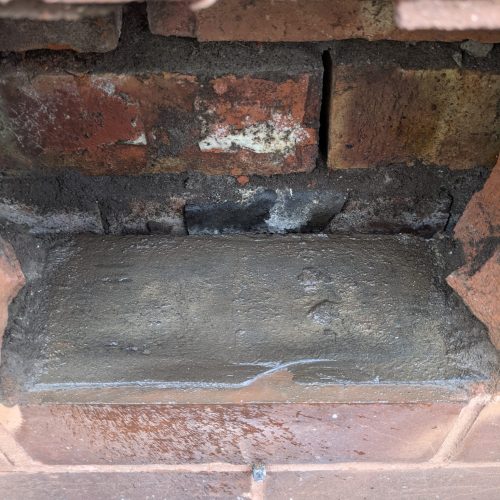
90 YEAR OLD DAMP PROOF COURSE
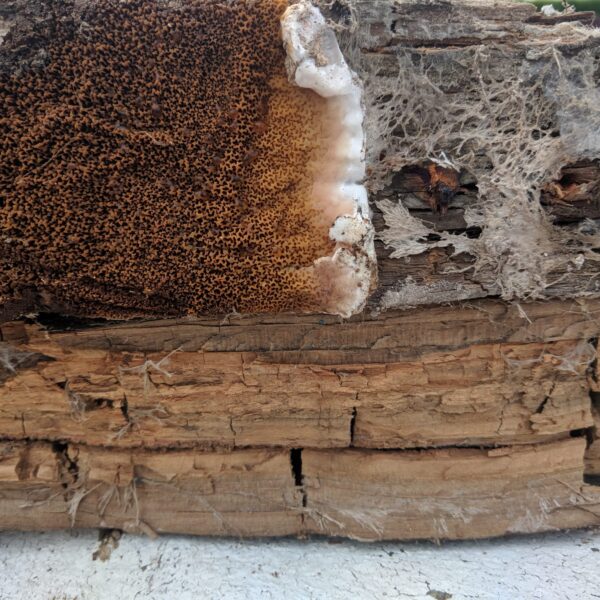
DRY ROT FUNGUS
DRY ROT TREATMENT SPECIALISTS
Dry rot Manchester
What is Dry Rot?
Dry rot is a serious type of timber decay that occurs in properties suffering from dampness and poor ventilation. The source of moisture can often be located in a different room, allowing dry rot to seek out damp areas beyond its immediate vicinity. This is distinct from wet rot, which is a localized issue; if your joists are affected by wet rot, the dampness is confined to that specific area.
Diagnosing dry rot and wet rot accurately is critical, yet misdiagnoses happen all too often. Look for definitive signs of dry rot, such as large, cuboidal cracks in the timber, a white film on the surface, and the presence of large fruiting bodies. The “roots” of dry rot can infiltrate walls and behind panelling in their relentless search for moisture, leading to rapid spread.
It is imperative to consult a dry rot specialist in Manchester as soon as you notice any signs of timber decay. This step is essential to avoid unnecessary costs associated with ineffective treatments. Dry rot is prevalent in Manchester homes with damp issues and inadequate ventilation, and timely intervention is key to protecting your property.
Dry rot treatment Manchester
Treating dry rot in Manchester
To treat dry rot effectively and prevent it from coming back, you will need to use a dry rot specialist in Manchester. A dry rot treatment specialist in Manchester will use the correct chemicals and techniques to get rid of dry rot properly.
Removal of all dry rot affected timber 1 meter past the last sighting.
Removal of all plaster 1 meter past the last sighting of the dry rot.
All material is bagged up and carefully disposed of.
The walls are then drilled and irrigated with dry rot treatment fluids.
New timber joists are protected with our sleeve system.
New and all old timbers are treated and receive a deep kill paste treatment.
All walls are then replastered using a dry rot preventing plaster.
The site is always left clean and tidy before handing back to the client.
Dry rot survey Manchester
We are the leading dry rot treatment company in Manchester. Our expert dry rot surveyor conducts thorough dry rot surveys for homeowners, mortgage assessments, and commercial clients. To identify whether you have dry rot or wet rot, you must first undergo a dry rot survey or timber rot survey. It’s crucial to note that these two types of timber rot are frequently misdiagnosed. When you choose our skilled dry rot surveyors, you can expect an accurate diagnosis and a definitive solution to effectively eliminate both dry and wet rot.
Trust us to protect your property from timber decay.
WOODWORM TREATMENT SPECIALISTS
Woodworm Manchester
What is woodworm?
Woodworm refers to wood-boring insects that can cause significant damage to structural timbers in a property. They are commonly found in older homes that experience damp issues. Often, homeowners discover a woodworm problem only after considerable damage has already been done to the timbers in their homes.
Are you a homeowner in Manchester and suspect you may have a woodworm problem? You might have noticed small holes in your timber joists, floorboards, or roof timbers. This issue is quite common in the UK. Many houses in the UK either currently have woodworm or have had previous infestations that were treated years ago.
To address this, it is advisable to hire a woodworm specialist in Manchester to conduct a thorough woodworm survey. Our expert woodworm surveyor will accurately diagnose your infestation and recommend the appropriate treatment.
Woodworm treatment Manchester
How to treat woodworm in Manchester. Firstly you need to find out what kind of woodworm is infesting your house. The most commonly found woodworm in the UK is the “common furniture beetle”. This woodworm requires a chemical spray treatment to kill it and prevent it from causing further damage. It is important that when you find an outbreak of woodworm it is treated as soon as possible. Timbers that are heavily infested may require removing and replacing.
Most cases with woodworm in Manchester only require a spray treatment. All woodworm treatments in Manchester should be carried out by a woodworm specialist and you should receive a full guarantee only completion.
Woodworm survey Manchester
Are you buying a home or have you found woodworm in floorboards or timber joists at home? We offer a woodworm survey in Manchester that will provide the correct diagnosis on your woodworm problem and tell you if you need woodworm treatment or not. All our woodworm surveys in Manchester are carried out by fully qualified woodworm specialists with many years of experience.
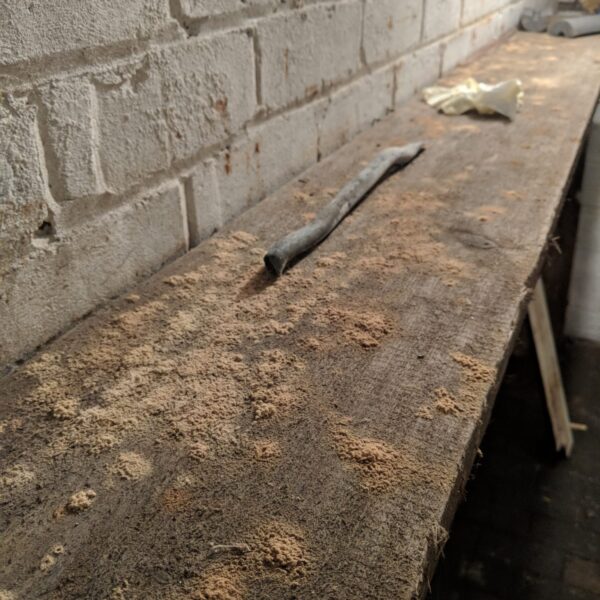
WOODWORM INFESTATION
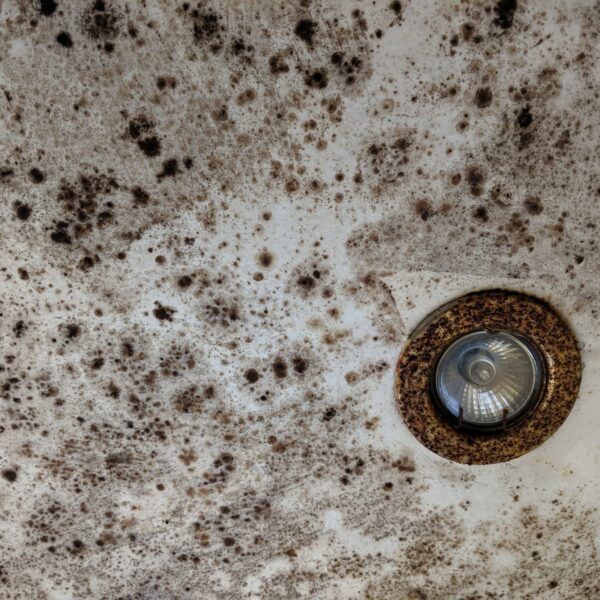
CONDENSATION
CONDENSATION CONTROL SPECIALISTS
Condensation Manchester
Condensation is a common cause of most damp problems in Manchester. Condensation occurs when warm air comes into contact with a cold surface. So if you have a cold house, you will probably have a condensation problem on your walls.
How to fix condensation Manchester
The most common form of dampness our surveyors come across is condensation. This is a simple fix and most other companies with over complicate the solution to get rid of condensation.
You will need to make sure your property is well-ventilated and kept warm. you will need fans in the kitchen and bathroom areas. Do not open windows and doors to get rid of condensation. All you will do there is let the cold in and blow steam around your house. You need adequate fans to suck the humidity out of your house and this will aid and prevent condensation.
Condensation survey Manchester
Mould survey and condensation specialists in Manchester
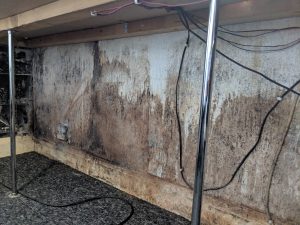
Our mould survey in Manchester is carried out by our specialist mould surveyors. Do you have a mould or condensation problem in your home or house that you rent out? We are condensation experts and our mould surveyors can help fix your condensation problem.
- Mould survey Manchester
- Condensation survey Manchester
- Mould surveyors Manchester
- Damp and mould surveyor Manchester
Are you a homeowner, landlord, tenant, or commercial client with mould on your walls in Manchester? If you have a damp problem, condensation problem or mould on walls then you will need a specialist mould survey carried out by an expert condensation surveyor. The specialist mould surveyor will carry out a full damp survey and provide a full damp report on the damp problems or condensation issues you may have. Our mould surveyors have many years of experience fixing mould problems and condensation in houses.
What is a Mould Survey?
A mould survey is where a damp surveyor carries out several tests on damp walls or walls with mould on them. The surveyor will inspect ventilation, heating and moisture content on materials suffering from condensation or damp. Once all tests have been carried out our damp surveyor can then diagnose the issue correctly and recommend the correct method to fix your damp or condensation problem.
What is a Mould Report?
A mould report is something you will receive after the mould or damp survey has been carried out. In the mould report, you will receive the surveyors findings, recommendations and a quotation if any work is found necessary to fix your mould problem or damp issue.
How long does a mould survey take?
The time it takes to carry out a mould survey or condensation inspection will depend on many factors. The size of the property is the main one and how many areas need inspecting. If the issue is a simple condensation problem on your bathroom walls, this survey can take as little as 30-40 minutes. If the damp problem is a lot more complex and needs many areas to be inspected, this condensation survey can take as long as a couple of hours.
Free mould survey Manchester:
Can you get a free mould survey on a damp problem or when you have mould on walls in your home? Yes, you can get a free mould survey on your mould problem. However, the damp contractor carrying out the free damp survey will recommend treatment like rising damp when it’s not needed. You need to avoid all damp proofing companies doing free damp surveys and pay for one. If you pay for a survey, you will get the correct diagnosis of the mould problem. This way you won’t waste time and money on damp treatment that doesn’t need doing.
Our expert mould surveyors in Manchester:
All our expert mould surveyors are fully trained and qualified to correctly diagnose all damp problems from mould on walls, damp walls, water running down walls and mould on clothes and shoes. Our damp surveyor will correctly diagnose your damp problem and tell you how to fix your dampness for good, he won’t just say it’s rising damp like most builders and damp proofing contractors in the damp industry.
How much does a mould survey cost in Manchester?
The cost of a mould survey is from £190-£490. This is the same price as a damp survey. You need to have a damp survey carried out by a damp surveyor so the surveyor can carry out a full survey of the property suffering from condensation or dampness.
 Do you have what looks like mould coming through your walls? Have you got moisture coming through the walls? Are your inside walls wet? Do you have condensation under the floorboards? Have you got mould in an old house? Do you have condensation on the outside walls? Have you got mould coming through the walls? Do you have condensation in a rented house? Are you buying a house with mould issues? All these questions can be answered by our specialist surveyors when carrying out a full damp survey on your property. Our surveyors can give expert condensation advice and recommend the correct way to fix your damp problem.
Do you have what looks like mould coming through your walls? Have you got moisture coming through the walls? Are your inside walls wet? Do you have condensation under the floorboards? Have you got mould in an old house? Do you have condensation on the outside walls? Have you got mould coming through the walls? Do you have condensation in a rented house? Are you buying a house with mould issues? All these questions can be answered by our specialist surveyors when carrying out a full damp survey on your property. Our surveyors can give expert condensation advice and recommend the correct way to fix your damp problem.
When looking for a “mould surveyor near me” or in your local area you will need to make sure they can give you the best condensation advice and the correct recommendation to fix the mould problem. We cover most of the UK for mould surveys and provide damp and timber surveys for mortgage purposes and homeowners. Although most of our condensation surveys are carried out in larger cities such as London, Manchester, Birmingham, Nottingham, Chester, Manchester, and Liverpool, we still cover the smaller areas. Click on our local branch pages above to see our areas covered.
To enhance our damp inspections, we use equipment specifically designed for mould detection. Our toolkit includes moisture meters for measuring humidity levels in materials, thermal imaging cameras for identifying temperature variations linked to moisture, and air quality testing devices to analyze airborne mould spores.
If you require some free friendly advice on how to get rid of condensation or how to fix damp walls, then please give us a ring and we can help explain everything and give you some condensation advice or mould prevention solutions. We believe in a safe and healthy environment in homes, which is why we offer recommendations for effective condensation prevention solutions. By talking with property owners, we suggest solutions to address mould concerns, including professional mould removal, improving ventilation, and installing dehumidifiers. Additionally, we provide guidance on best practices to reduce the risk of future growth, regular maintenance, effective humidity control, and prompt repairs of plumbing leaks.
To get a mould survey carried out on your home or property in Manchester, you will need to contact us via phone or visit our contact form page. We will either provide you with a free quote over the phone or email you back with a cost for the survey. If you are happy with the cost of the mould survey, we will then book you in for a time and date that suits you.
Is condensation mould bad for you?
We get this all the time when we visit a tenanted property and the tenants say the mould is causing breathing problems and I’m ill because of the mould. There is no scientific evidence that mould on your walls will cause these problems. Unless you are going up to the walls are licking the mould off then it will not cause you any harm.
Yes, it’s not nice being on the walls and will cause a musty smell, but all you need to do is clean it away when it appears.
If you have the correct ventilation in your high-humidity areas and keep your home at a nice temperature, you will not get mould on your walls.
Dampserve have been operating for over 30 years. With a combined experience of our surveyors of over 100 years, you can rest assured we have seen it all and fixed it all.
Why choose us for a damp survey or timber treatment?
- We offer complete peace of mind when it comes to carrying out damp and timber surveys in Manchester.
- All our surveys are fully independent and we don’t look for work like most damp contractors in Manchester. That’s why we charge for our timber and damp surveys. We make our money from the survey fee, so if there is nothing wrong with the property, that’s exactly what we will state in the report.
- How much does a damp and timber survey cost? The cost of a survey will depend on what needs inspecting and the size of the property. A specialist survey will range from £190-£590+.
- All our specialist damp surveyors in Manchester are fully trained and qualified with many years of experience carrying out damp and timber surveys.
- Our surveyors will correctly diagnose the damp or timber decay (dry rot) issue. Our surveyors will not just say the problem is rising damp and try to sell you a damp proof course. WE CORRECTLY DIAGNOSE THE PROBLEM.
- Again, this is why we charge for the damp and timber survey. You will be getting a specialist diagnosis and our surveyor will find the root cause of the damp problem.
- We don’t just say everything is rising damp and recommend rising damp treatment like most damp contractors in Manchester.
- We carry out many surveys after other damp companies have been into the property. They always recommend a new damp proof course to fix the damp problem. The first thing all our surveyors will do when conducting a damp survey is find the original damp proof course. Every house in the UK built after 1875 will have a physical damp proof course. Your house will not need a new one (check the age of your property first).
- Once the damp proof course has been found, our surveyor will look for bridging (most damp problems are due to bridging). Bridging is where plaster, flowerbed, a concrete floor has bridged the damp proof course. This will allow moisture to jump over it and penetrate into your walls.
- Hopefully from reading the small comments above you will realise that we are not damp and timber contractors looking to make easy money by selling you an unnecessary damp proof course. We are specialist damp consultants that correctly diagnose any timber decay, infestation, and damp problem in Manchester.
Dampserve carries out down-to-earth damp and timber surveys daily across all of Manchester and surrounding areas.

